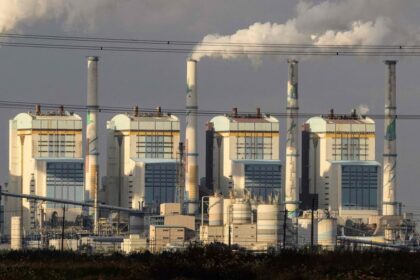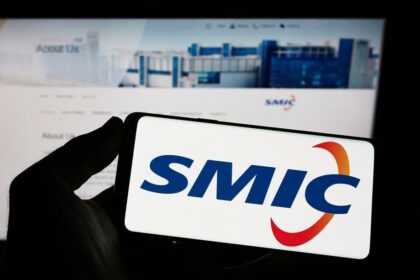China’s Investment Surge in Korea: A Strategic Shift Amid U.S. Tariffs
In a dramatic turn in global investment flows, China has overtaken the United States as the top source of foreign direct investment (FDI) pledges to South Korea. According to a recent report by the Korea Institute for International Economic Policy (KIEP), Chinese investment pledges soared to a record $6.79 billion last year, marking a 147% increase from the previous year and pushing the U.S.—which had held the top spot for seven years—down to third place. This surge is not just a matter of numbers; it reflects deep shifts in global trade, technology competition, and the evolving strategies of multinational corporations navigating a world increasingly defined by tariffs and regulatory uncertainty.
- China’s Investment Surge in Korea: A Strategic Shift Amid U.S. Tariffs
- The U.S. Tariff Regime: Pressure and Opportunity
- Chinese Firms: Navigating the Tariff Maze
- Geopolitical Tensions and Regional Responses
- Winners and Losers: The Broader Economic Impact
- Looking Ahead: Policy, Innovation, and the Future of Trade
- In Summary
Why Is China Investing in Korea?
China’s investment in Korea is driven by a complex mix of economic necessity and geopolitical calculation. As the United States continues to ramp up tariffs and restrictions on Chinese goods—especially in high-tech sectors—Chinese firms are seeking new ways to access global markets and advanced technologies. Korea, with its robust manufacturing base, advanced technology sectors, and strategic location, has become an attractive destination.
Beijing’s strategy appears twofold:
- Circumventing U.S. Tariffs: By investing in Korean manufacturing and logistics, Chinese firms can potentially route products through Korea, taking advantage of Korea’s trade agreements and avoiding direct U.S. tariffs on Chinese goods.
- Securing Technology and Market Access: Korea is a global leader in semiconductors, batteries, and advanced manufacturing. Chinese investment aims to tap into these sectors, secure supply chains, and gain a foothold in both Korean and global markets.
However, the gap between pledged and actual investment is striking. While $6.79 billion was pledged, only $1.23 billion was actually invested—a record disparity. This suggests that many Chinese firms are delaying or reconsidering their plans, wary of regulatory risks and the shifting sands of global trade policy.
The U.S. Tariff Regime: Pressure and Opportunity
The backdrop to this investment surge is the aggressive tariff policy of the United States, particularly under President Donald Trump. Over the past several years, the U.S. has imposed sweeping tariffs on imports from China and other major trading partners, aiming to protect American manufacturing and reduce reliance on foreign supply chains.
Recent trade deals have set new tariff rates for key U.S. allies. South Korea, after intense negotiations, secured a 15% tariff rate on its exports to the U.S.—down from the threatened 25% but still a significant increase. In return, Korea pledged $350 billion in investments in the U.S., with major allocations for shipbuilding, semiconductors, batteries, and energy projects. The deal also included a $100 billion commitment to purchase U.S. energy products.
While these agreements have provided some relief for Korean exporters, they have also created new complexities. The U.S. maintains high tariffs on steel and aluminum (50%), and regulatory uncertainty remains high, especially in sectors like clean energy and advanced electronics.
Impact on Korean Industry and Supply Chains
Korea’s export-driven economy is highly sensitive to shifts in global trade policy. The new tariff regime has forced Korean firms to adapt quickly, seeking ways to maintain competitiveness in the U.S. market while managing rising costs and regulatory hurdles. For example, Hyundai Motors has announced major investments in U.S. manufacturing, and Korean battery and semiconductor firms are expanding their American operations to mitigate tariff impacts.
However, the regulatory environment remains volatile. The U.S. has launched Section 232 investigations into imports of critical materials like polysilicon (used in solar panels and semiconductors), threatening to disrupt supply chains and raise costs for both Korean and Chinese firms operating in Korea. Korean officials have lobbied for exemptions, warning that broad tariffs could undermine billions in planned U.S. investments and jeopardize jobs on both sides of the Pacific.
Chinese Firms: Navigating the Tariff Maze
For Chinese companies, Korea offers both a refuge and a risk. By establishing manufacturing bases in Korea, Chinese firms hope to:
- Bypass direct U.S. tariffs on Chinese-made goods by exporting from Korea
- Access advanced Korean technology and production capabilities
- Enter new markets through Korean supply chains and trade agreements
Yet, this strategy is fraught with challenges. U.S. authorities have stepped up investigations into “transshipment”—the practice of routing Chinese goods through third countries to evade tariffs. Several cases have already led to new duties on products suspected of being falsely labeled as Korean-made. The risk of regulatory crackdowns is particularly acute in sensitive sectors like batteries, semiconductors, and specialized machinery.
Some high-profile Chinese investments have already been withdrawn or delayed. GEM, China’s largest precursor materials company, canceled a major battery materials factory project in Korea due to uncertainties surrounding the U.S. Inflation Reduction Act. Zhejiang Huayou Cobalt postponed a planned investment with Posco Future M, citing risks from the U.S. administration. These examples highlight the precariousness of using Korea as a workaround for U.S. trade barriers.
Sector Focus: Batteries, EVs, and E-Commerce
Despite the risks, Chinese investment in Korea remains concentrated in manufacturing—especially batteries, electric vehicles (EVs), and related supply chains. Firms like Xiamen Tungsten and Ningbo Jiangfeng Electronic Materials have announced new factories, while BYD, the world’s largest EV maker, has launched its Atto 3 model in Korea. Zeekr, another Chinese EV brand, plans to enter the market next year.
Chinese e-commerce and logistics giants, including Alibaba and Temu, are also expanding their presence in Korea, leveraging the country’s advanced infrastructure and proximity to major markets.
Geopolitical Tensions and Regional Responses
The surge in Chinese investment is not occurring in a vacuum. It is part of a broader regional response to U.S. trade policy. China, Japan, and South Korea have held high-level talks to coordinate their approaches to U.S. tariffs and strengthen regional supply chains. While reports of a formal joint response have been downplayed by Korean and Japanese officials, all three countries have expressed a desire to accelerate free trade negotiations and deepen economic cooperation.
At the same time, the U.S. is pressuring its allies to align more closely with American interests, particularly in high-tech sectors. South Korea’s status as a key U.S. ally gives it some leverage, but also exposes it to demands for greater market access, regulatory changes, and increased defense spending.
Technology, Security, and the Risk of “Tech Leakage”
One of the major concerns raised by Korean policymakers is the risk of technology leakage. As Chinese firms invest in Korean manufacturing and R&D, there is growing anxiety that sensitive technologies—especially in semiconductors, batteries, and AI—could be transferred to Chinese competitors. The KIEP report warns that aggressive low-price strategies by Chinese companies could erode the profitability of Korean firms and undermine the country’s technological edge.
To address these risks, Korean authorities are tightening enforcement against illegal transshipment and strengthening oversight of foreign investment in sensitive sectors. The U.S. has also imposed new duties on products suspected of circumventing tariffs via Korea, and both countries are increasing scrutiny of supply chain integrity.
Winners and Losers: The Broader Economic Impact
The shifting landscape of global investment and trade policy is creating both opportunities and challenges for Korea, China, and the United States.
- Korea: Gains from increased investment and supply chain diversification, but faces risks to its technology base and export competitiveness.
- China: Finds new avenues to access global markets and technology, but faces growing regulatory and geopolitical headwinds.
- United States: Sees some success in reshoring manufacturing and attracting foreign investment, but risks higher consumer prices, supply chain disruptions, and diplomatic friction with key allies.
For Korean firms, the immediate challenge is to adapt to a more protectionist and unpredictable global environment. This means investing in U.S. manufacturing, diversifying supply chains, and enhancing compliance with trade regulations. For Chinese firms, the calculus is even more complex: balancing the benefits of Korean investment against the risks of regulatory backlash and technology restrictions.
Expert Perspectives
Trade experts and industry analysts are divided on the long-term implications of these trends. Some see the surge in Chinese investment as a temporary spike, driven by the urgency to circumvent supply chain constraints and regulatory barriers. Others warn that the growing entanglement of trade, technology, and security could lead to a more fragmented and volatile global economy.
Seungjoo Lee, a professor of political science and international relations at Chung-Ang University in Seoul, explained the strategic logic behind Korea’s investment commitments:
“There aren’t many countries that can restore the shipbuilding capacity of the U.S., particularly given that China is a strategic rival. That’s why the United States and Japan included cooperation on shipbuilding in their agreements, and in terms of capacity, South Korea is in a better position.”
Tami Overby, a former president of the American Chamber of Commerce in Korea, commented on the limited choices facing U.S. trading partners:
“I don’t think they have a choice. I don’t think any country has a choice. This is how the president has decided to do it, and you either get on board or you pay higher tariffs.”
Looking Ahead: Policy, Innovation, and the Future of Trade
The current wave of Chinese investment in Korea may be a harbinger of deeper changes in the global economic order. As the U.S., China, and Korea each pursue their own interests—sometimes in cooperation, often in competition—the rules of global trade are being rewritten.
Some analysts argue that a narrow focus on tariffs and investment flows misses the bigger picture. The future of economic security, they say, will depend on deeper cooperation in science, technology, and innovation. Proposals for a U.S.-Korea Economic Security Partnership, centered on AI, critical minerals, and advanced manufacturing, are gaining traction among policymakers and think tanks. Such partnerships could help both countries hedge against external shocks, accelerate innovation, and set global standards for technology governance.
Yet, the risks of fragmentation and protectionism remain high. As tariffs proliferate and supply chains are reconfigured, the potential for trade disputes, technology leakage, and geopolitical rivalry grows. For Korea, the challenge will be to balance its economic ties with both the U.S. and China, safeguard its technological leadership, and maintain its role as a vital hub in the global economy.
In Summary
- China has overtaken the U.S. as the top source of investment pledges to Korea, driven by efforts to bypass U.S. tariffs and secure technology.
- The gap between pledged and actual Chinese investment is wide, reflecting regulatory uncertainty and geopolitical risks.
- U.S. tariff policy has forced Korea to make major investment commitments in the U.S. while adapting to higher trade barriers.
- Chinese firms are using Korea as a base to access global markets, but face increasing scrutiny over transshipment and technology transfer.
- Korean industries, especially in batteries and semiconductors, are caught between competing U.S. and Chinese interests.
- Experts warn of risks to Korea’s technological edge and the potential for greater economic fragmentation.
- The future of trade may depend on deeper cooperation in technology and innovation, but the path forward remains uncertain.












